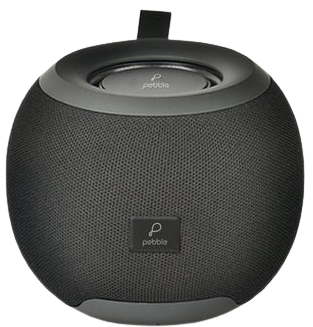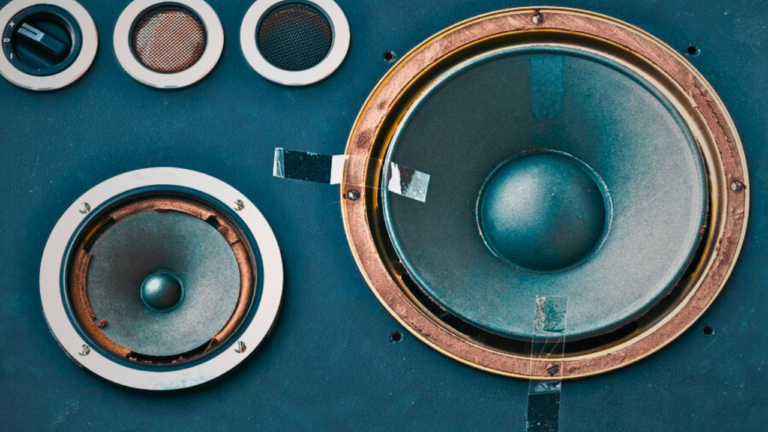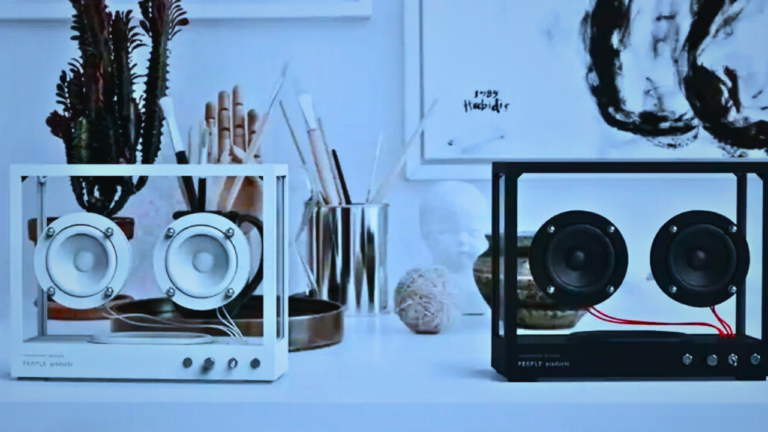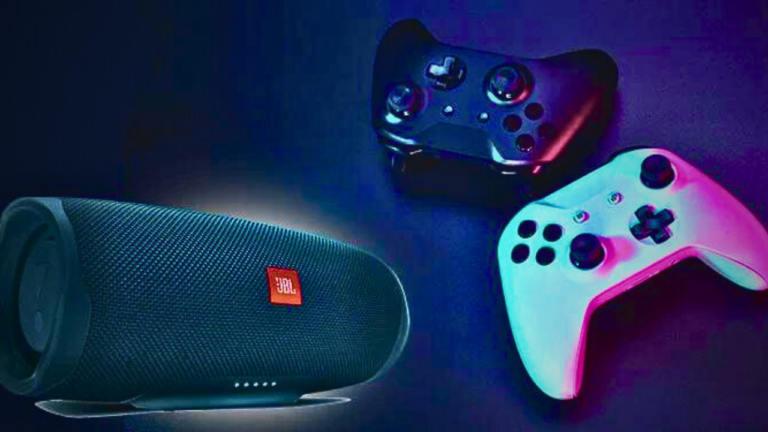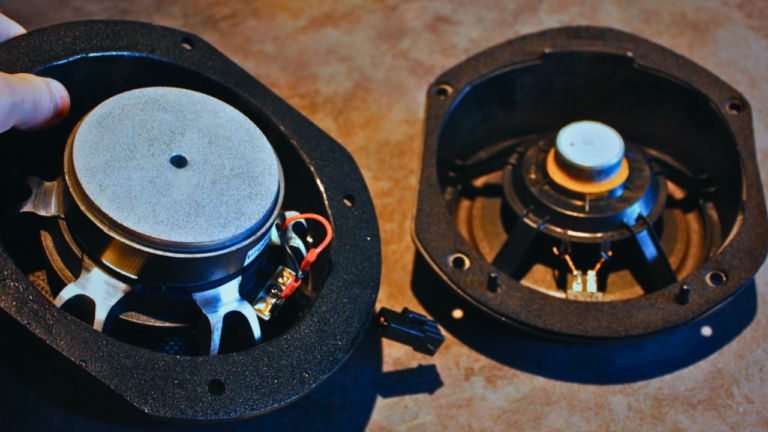How To Install Speakers In Car Trunk?
Isn’t it amazing how music can dramatically improve the mood of a long drive? Cranking up the volume to your favorite beats causes an instantaneous boost of adrenaline, making even a dreary commute seem more vibrant and enjoyable.
But for an unbeatable sound experience in your vehicle, you may consider installing speakers in your trunk. Not only does it maximise the bass effect, but it also provides a surround sound experience similar to a live concert. It’s not as complicated as it sounds. In fact, with the right tools and a little patience, you can do it yourself. Let’s delve further into this topic:
“Installing speakers in your car trunk enhances audio quality greatly, not to mention it can also save you the cost of professional installation.”
Hence, in this article, we are going to guide you through the entire installation process for car trunk speakers. We will consider:
- Choosing the right speakers for your needs and car model
- Understanding the installation setup
- Gathering necessary tools
- The step-by-step installation guide
Remember: The journey of a thousand miles begins with a single step. So let’s start with the basics.
What are the necessary tools for installing car trunk speakers?
To embark on your journey of installing car trunk speakers, you’ll require a toolkit equipped with specific tools. Let’s break them down:
1. Screwdrivers
A must-have in your toolkit, you’ll need both flat-head and Phillips-head screwdrivers. The majority of screws used in car trunks can be undone using these.
2. Wire Cutters and Wire Strippers
While wire cutters chop the wire to the necessary length, wire strippers expose the metal wire, preparing it for the connection process.
3. Electric Drill
Should you need to create new holes for the speakers or mounting brackets, an electric drill will be invaluable. Ensure you have a drill bit that matches the size of the screws your speakers came with.
4. Soldering Iron
For secure connections, a soldering iron can come quite handy. Remember, good connections are key to superior sound.
5. Panel Removal Tool
To avoid any potential damage to the panels while removing them, make use of a panel removal tool. It’s built specifically for such tasks.
6. Electrical Tape
After soldering, use electrical tape to cover any exposed wires, helping to prevent any short circuits.
You’re well on your way to transforming the soundscape of your car with these tools. Preparation is indeed half the battle won, so curate your toolkit smartly!
What are the different types of speakers suitable for car trunks?
When it comes to picking the right speakers for your car trunk, the options may seem quite extensive. Don’t let this deter you! Let’s help you navigate through the different types.
Subwoofers
Subwoofers are a popular choice for the car trunk due to their large size and power. They’re specifically designed to provide those low-frequency sounds, giving your music the depth and punch you crave. Subwoofers typically need a dedicated enclosure to work effectively.
Component Speakers
Component speakers offer superior sound quality. This system separates the tweeter and woofer, allowing each to do its job more efficiently. The setup is more complex but can develop a highly articulated sound with better stereo imaging.
Coaxial Speakers
Also known as full-range speakers, coaxial speakers are an all-in-one speaker system where multiple speaker cones are incorporated into the same unit. This type is generally more affordable and easier to install, though it may not deliver the same sound quality as component speakers.
Free-air Subwoofers
These are special types of subwoofers that don’t require an enclosure. They can be mounted on a board or the rear deck, utilizing the trunk space as an enclosure. It’s a suitable choice if you seek to conserve trunk space while maintaining sound quality.
Remember, the best speakers for your car are usually those that align with your personal audio preferences and the acoustics of your vehicle. We highly advise researching each type and testing them out before making your final choice.
What are the basic steps to installing speakers in a car trunk?
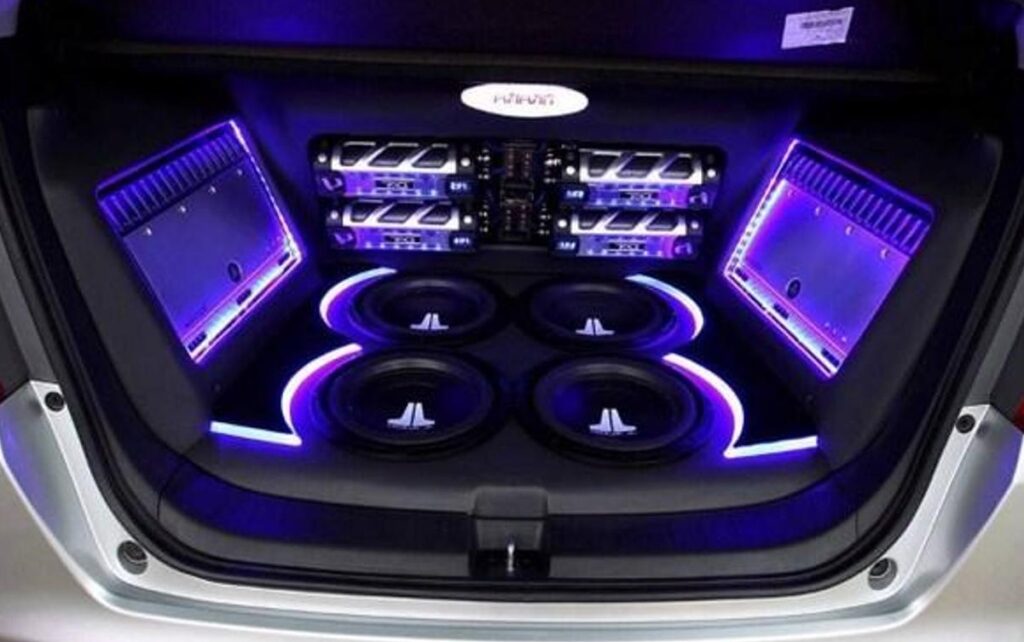
Carrying out an installation may not always ensure high-quality sound. To optimize the sound quality, after you have secured everything, it’s important to further understand your car’s acoustic environment.
| Step | Description |
|---|---|
| 1: Preparation | Disconnect the car battery and gather all the mentioned tools. |
| 2: Remove Panels | Use the panel removal tool to cautiously take off the trunk’s interior paneling. |
| 3: Speaker Placement | Scope out the best place for your speaker. It should not interfere with your trunk’s operation, and it should be close enough to the stereo system’s wires. |
| 4: Drill | Mark the speaker outline and drill holes accordingly. Make sure not to drill too deep or through any wires in your trunk. |
| 5: Install Speakers | Mount the speakers in the drilled holes using screws. Ensure the wires are passing through the back of the speakers to connect to the audio system. |
| 6: Wire Connection | Connect the speaker wires to the audio system using a soldering iron and cover it with electrical tape, ensuring a secure connection. |
| 7: Test | Reconnect the battery and give it a test run. Check if the sound distribution is as expected and the audio system is working perfectly. |
| 8: Panel Replacement | Once you’re sure everything is working correctly, reattach the trunk’s interior panels safely. |
Not all cars are built the same, and each type will have its own unique set of characteristics when it comes to sound directional control. Pay careful attention to this, and adjust your speaker’s position if required.
Regular system maintenance is crucial. Ensure occasional checking of your speakers for any signs of damage or wear, and address any issue promptly to maintain optimum sound quality. Cleaning the audio components also falls under this category. Dust and dirt buildup can negatively impact sound quality over time.
With the above-mentioned considerations, you should be able to ensure a superior in-car audio experience. Unleash your favorite tunes in your car and enjoy the ride!
Read also: How To Connect Ps5 To Speakers?
What safety precautions should be taken while installing speakers in a car trunk?
As always, safety is paramount when installing speakers in your car’s trunk. It’s not just about following the procedure correctly; it’s about being smart and taking the right precautions to avoid potential hazards. Being prepared can save you from injuries and damage to your car or equipment.
1. Disconnect the Battery
The first safety precaution is to ensure the car is disconnected from its power source. This is because the electrical systems in your car can be fragile and may be damaged if there’s an electrical charge when you’re working. Make sure the positive and negative cinch are removed from the car battery before starting.
2. Properly Use Tools
Next, always use the tools as they were designed. This will not only prevent any likely injury but also protect your equipment from any damage. Remember, it’s important not to force items to fit. If something doesn’t seem to be slotting in, check that you’re using the right section or part.
3. Be Aware of Your Surroundings
You’ll need to consider your physical surroundings, ensuring you have sufficient space to work without tripping over any tools or other hazards. Pay special attention to live wires you may encounter during this process to avoid electric shocks.
4. Prioritize Personal Protection
Wear a pair of sturdy gloves to protect your hands from any sharp objects, and consider wearing safety glasses to protect your eyes, especially when drilling. Keep emergency contact numbers nearby, and consider having a first-aid kit handy just in case.
How can one optimize the sound quality after installing speakers in the car trunk?
Sound quality isn’t solely based on the type of speakers you install in your trunk; though that’s a significant factor, it also heavily relies on how properly the speakers are installed and if the car’s acoustics are considered. Aren’t you excited to learn how to ensure optimal sound quality after successfully installing your car trunk speakers? Let’s get to it!
Understanding Car’s Acoustic Environment
Your car’s interior is unique, and understanding this space is pivotal to obtaining the best acoustics. Be conscious of the fabric type, be it your seats or roof lining. Each can affect the sound in different ways and should influence the type and placement of your speakers.
Allocating Proper Power To Your Speakers
Creating the perfect sound system comes down to power allocation. More power generally ensures lower distortion and a clearer sound. You may need to purchase a separate amplifier if you find your audio system isn’t getting enough power to hit those high notes.
Tuning the Amplifier Correctly
Simply supplying power isn’t enough; tuning that power makes a significant difference. Optimizing your amplifier’s gain and volume controls can reduce distortion and improve the overall sound quality of your system.
Pro Tip: It is always better to start with a lower gain and gradually increase it while fine-tuning the sound. Remember, higher gain doesn’t always mean better sound quality.
Using a Sound-Dealing Material
The use of sound-disabling materials like Dynamat can significantly improve sound quality. This reduces any vibrations and road noise that can interfere with your experience. Installation can typically be quite simple, and the benefits are substantial.
System Maintenance
Just as anything, your speaker system needs regular maintenance to ensure it performs at its peak. Regularly reviewing and possibly updating wiring and checking speakers for any damage will keep your audio system in prime form.
Employing An Equalizer
An equalizer allows for minute adjustments in the sound frequency, which can help create a more balanced sound. Don’t be afraid to experiment with different sound profiles to discover what you prefer.
Optimizing the sound quality after installing speakers in the car trunk is an art. It is all about trial and error and understanding the unique requirements of your car’s interior. Follow the above-mentioned steps, and you’ll be on the path to a uniquely superior audio experience. Happy tuning!
Conclusion
In conclusion, installing speakers in your car trunk can seem like a daunting task at first. However, with the right tools, knowledge, and patience, the process can become straightforward and even enjoyable. By selecting the right type of speakers for your car and using them optimally, you can greatly enhance your car’s audio system and turn every car ride into a personal concert.
Remember to always prioritize safety when undertaking such tasks. Be fully acquainted with all the necessary tools, how to use them, and, most importantly, how to disconnect and reconnect your battery properly. After all, your safety should be the primary concern.
Once the installation is complete, don’t forget the importance of system maintenance. Regular check-ups and necessary adjustments will ensure that your new speakers continue to deliver optimal performance for a longer period of time.
Lastly, don’t shy away from seeking professional help if you need it. While it’s rewarding to complete this task on your own, there’s no harm in asking for assistance when necessary. Good luck with your car audio system upgrade, and happy listening!
Read also: How To Connect Bose Speakers To Regular Speaker Wire?
FAQs
What type of speaker should I install in my car trunk for the best bass?
Subwoofers are generally considered the best for delivering powerful and deep bass sounds. Their low-frequency response is unmatchable, and they are specifically designed to handle bass effectively.
Is it safe to drill holes in my car trunk to install speakers?
Yes, it’s safe. However, care must be taken to avoid drilling into any existing wiring or structure that may be crucial to the vehicle’s safety. Always double-check the planned drilling spots.
Can I install speakers in my car trunk by myself?
Certainly! With proper guidance and patience, you can perform the task yourself. While doing so can be satisfying, ensure that you are equipped with all the necessary tools and follow safety protocols.
How do I know if I’ve installed the speakers correctly?
The best way to identify proper installation is through testing your new setup. The sound should be clear, with no distortions. If you face issues or if the output is not satisfactory, troubleshoot or consult a professional.
Will installing speakers in my car trunk affect my car’s battery?
Speaker systems take power from your car’s battery to operate. High-power speakers may drain the battery faster, especially if played at high volumes for extended periods without the car running. Choose your system wisely, and keep an eye on battery levels.
Can I add multiple speakers to my car trunk?
Yes, but make sure that your audio system can support the extra load. Adding too many speakers without proper amplifier support could lead to reduced overall sound quality.
How can I protect my speakers from damage in the trunk?
Keep sharp objects away from your speakers. Also, consider installing grill covers to protect the speaker cones. Using sound-disastering materials can also help reduce external harm and enhance audio quality.
How long does it usually take to install speakers in a car trunk?
It largely depends on your skills and the complexity of the system you’re installing. Generally, expect the process to take a few hours, including testing and adjustments.
Why is disconnecting the battery necessary before installation?
Disconnecting the battery is a crucial safety measure before any electrical work. It prevents any accidental electrical shocks or short circuits that could harm you or damage the vehicle.
What happens if the wire connections are not properly set?
Incorrect wire connections can result in poor sound quality, inconsistent performance, or even damage to the speakers and the car’s electrical system. Thus, it’s essential to double-check all wiring connections during installation.

Hey there! I’m Henry Jack, the voice behind speakerrealm.com, your ultimate destination for everything speakers. Whether you’re a seasoned audio enthusiast or just starting to explore the world of sound, you’ve come to the right place.
At Speaker Realm, I dive deep into the realm of speakers, bringing you comprehensive reviews, insightful guides, and the latest trends in the industry. From floor-standing behemoths to compact bookshelf wonders, I cover it all.
I’m passionate about helping you find the perfect speakers to elevate your audio experience. Whether you’re setting up a home theater, upgrading your sound system, or just looking for some quality audio gear, I’ve got you covered.
But Speaker Realm isn’t just about technical specs and performance metrics—it’s also about the art and science of sound. I explore topics like acoustic design, speaker technology, and the impact of audio on our lives.
So whether you’re a casual listener or a hardcore audiophile, join me on this journey through the world of speakers. Let’s turn up the volume and explore the endless possibilities of sound together at speakerrealm.com!
